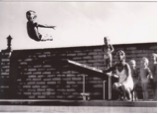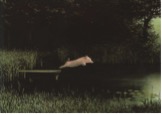Proto-Call / WOF 2016 / C. Lars Schuchert
With the WOF 2016 we are setting aside time for a journey. Following the un-necessity of ornament, we will go for walks – metaphorically and in reality, discovering places of E.L. Kirchner – setting forth to dreams may come. Finding ourselves in unexpected topoi, implanting the uncontrolled challenge of serendipity by trusting people to improvise navigation, and provide models as toys for tools. Within a given rhythm of walks and talks, we will meet in matter, performances, presentations, and dialogue.
To set the stage and content of the WOF 2016, we ask for proposals in formats which are open to experimentation and reflection while addressing topics of gesture and practice, model and example. We are asking for proposals to conclude what the WOF 2016 will have been once it is over: whom you will have met, what topics will have been discussed, what you will have discovered, etc.
Engaging this utopian picture in retrospective future feedback, we will unroll the ornamental present towards the WOF 2016, finalizing in the past of un-production.
As warm-up, we ask for the contribution in the sense of a «Letter of Interest» at our website, proposing your interest and involvement at the WOF 2016 and reaction to the following question:
- How can the metaphor of a «model» help to understand the connection between ornament and unproductive activity?



How can the metaphor of a «model» help to understand the connection between ornament and unproductive activity?
A model always is both, a thing as such (a model), and something that stands for something else (the original, the real thing, the result…). The model exists in its reality as a model and it serves as a projector of ideas that are not less real but virtual. The “original”, the “something else” is not the model. It has its model(s) as its projectors. Nevertheless, an original or something else can also be a model, for yet another original or result. This would be the exemplary nature of anything whatsoever, when an example projects into another reality and by doing so becomes a model. So when a table gives rise to another table, then it functions as both a model and an example. When a table does not do so, it is just an example. And when it gives rise to something else, say a bed, then it is just a modle in relation to the bed. (Right?) A table used as a bed has lost its exemplary nature for the use of “table” (even though one can eat in or on the bed…)
Ornament, through repetitive gestures and playful deviations creates a large potential for such escapes of exemplarity. It can move left, then right, and suddenly: the new! This is true for both ornament as object or as activity. While the moves as such are pure gestures and in this strikt (or restricted) sense “unproductive”, the resulting “new” is productive, it is a produced result.